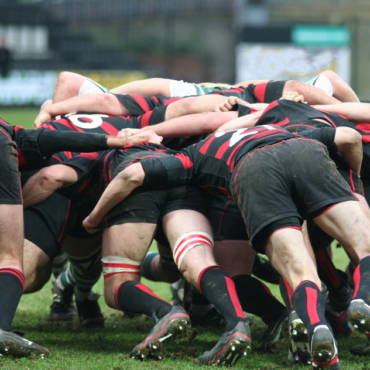Typically the end of season means a well earned rest, a few quiet drinks with team mates, some time with family and then… the end of season review.
Every team does some kind of season reflection or review – in most cases motivated by one or more “P” – Performance, Politics, Pressure.
- The Performance Review: is one motivated by a drive to improve the performance of the team – players, coaches and staff – for next season.
- The Political Review: is a review often driven by the Board or Executive to achieve a political agenda or philosophical shift in the club.
- The Pressure Review: is one forced on a team by media, fans, club, Board or other stakeholders as a result of a poor performance.
By far the most effective review is one that is deliberately and strategically placed in the team’s “performance cycle” each year and is embraced by coaches, players, staff, Management and Board as being an important and positive aspect of progressive performance from season to season.
The Performance Cycle: The review is a key part to the overall performance cycle of the team.
Every team – every club – every coach – every player – is seeking one thing –Sustained Competitiveness: the ability to be competitive year after year after year.
A well structured review process ensures that by systematically reviewing and evaluating all aspects of performance, the opportunity to sustain competitiveness is integrated into the culture of the club.
Here are some tips to help make this year’s RE- view and PRE-view of success next season.
Review with next year in mind – don’t waste time looking back in anger
Reviews can make people very nervous and many coaches and players see it as a negative process. A well planned and well implemented review can be THE most critical element of planning for the next season and is an opportunity to move forward. It can be one of the most positive and productive times of the year. It is the time when feedback can be given and received with real positive energy and enthusiasm.
Don’t waste the review time by looking back and micro-analysing every aspect of every game, tackles missed in game one etc. This has all been done through the season. Use the RE-view as a PRE-VIEW: use it as an opportunity to get your best people together and work co-operatively and honestly to improve next season.
Benchmark against the best, whoever and wherever they may be
All sports are close communities and secrets do not stay secrets for long. It is safe to say that everyone knows what you know. In this closed environment, teams need to look outside your sport for the best solution – not just the AFL solution or the baseball solution or the swimming solution……the BEST solution!
If you were looking to improve the individualisation of player’s preparation, the answer might lie in one of the Olympic sports. If you were looking to improve on field endurance, the answer might lie in soccer or Rugby league. If you were looking to improve player leadership skills, the answer might lie in the corporate sector, business community or even politics! Once you have identified the problems, look for THE best solutions.
Keep the things that you do well, change the things that aren’t working – 10% rule
One of the biggest mistakes teams make at review time is to throw everything out and start again. Most clubs do far more right than they do wrong. If your car’s gearbox is broken, fix the gear box – don’t replace the engine, tyres, brakes, steering, cooling system and stereo. Build on the things that work well and change or eliminate the things that don’t. Try to adopt this simple three step review process of each area:
- What do we do that works? – What should we keep doing?
- What do we do that doesn’t work? – What do we do that we should stop doing?
- What are things that we can introduce that will positively impact on performance? – What should we start doing?
Make sure you know what the budget is for next season BEFORE you start planning
Before you start planning for next season, make sure you are clear on what you can and can’t do from a budget perspective. Everyone has millions of ideas and suggestions of things that might work but in a real world, most clubs are working on a tight budget and it is a matter of prioritising.
- Start with the things you must do – e.g. train hard, eat well, sleep and recover well, manage and minimise injuries.
- Then start to look at things you want to do – e.g. introduce new equipment, new specialist coaches and staff, training camps, new facilities.
- Then look at things you wish you could do – e.g. altitude camps, individualised diet management, specialist coaching services for individual positions.
Be Systematic: Look at everything: little things can make a big difference
At the beginning of the review process, write down a list of everything in your program that can make a difference. The easiest way to do this is to ask each person – coaches, sports scientists, medical team, team manager and players to review their own performance using the Keep, Stop, Start method and to highlight the key factors of their specialist areas.
Aim to make everything subject to a genuine 360 review process, i.e.
- Each person reviews their own performance
- Each person is reviewed by their peers
- Each person is reviewed by their immediate report, i.e. the person they report to
- Each person is reviewed by the people who report to them
For example, a team defensive skills coach would be reviewed by himself, the other team skills coaches, the head coach and the players.
Start with a philosophy: If you don’t stand for something, you will fall for anything.
With the review process comes a flood of ideas, innovations, new technologies, new supplements, gym equipment and gimmicks. Everyone will have great ideas and new products that will “guarantee” success next year.
Start the review with a philosophy. This keeps you grounded and keeps you focused on improving the right things. The process starts with understanding what you are about as a team and club.
Ask yourself three questions:
- What do we stand for? Who are we? This will help you clearly identify what it is about the team and the club culture that is unique, special and worth keeping.
- What are things we do well that will sustain this culture?
- What do we need? Who can we recruit to add value to this culture?
The real trick in program reviews and strategic planning is deciding what not to do – finding new ideas is the easy part – finding out what will work and add genuine value to the team is the real art.
Get someone independent to help with the review process – take personalities, politics and emotions out of it.
In the majority of cases, reviews are commissioned on political grounds. Someone in the club has decided that the performance of the coach, players and team is an issue and commissions someone to review the program. In many cases, the reviewer may also have political connections to the club and an agenda for change that may not be in the best interest of the team and the team’s performance next season.
Find someone independent, objective and politically neutral to co-ordinate the review process. Aim to identify someone who will establish a professional process – one that systematically analyses and reviews all key performance areas and is focused on improving the performance of the team, players, coaches and staff without any political or personality bias or prejudice.
Do it sooner rather than later. A season’s memories fade quickly
The ideal time to do a review is 3-5 days after the end of the season. Doing it immediately is often a bad idea as there is too much emotion, fatigue (and maybe hangovers) for it to be effective. Waiting until after players and staff have a long break is less than ideal as the accuracy of memories can fade quickly at the end of the season and a lot of detail forgotten.
The key is to build the review into the season and that the review is seen as integral to the overall team performance cycle rather than something distinct, separate and unrelated.
If you have to change personnel. Do it soon.
Unfortunately, sometimes reviews come up with a solution that results in the need to change coaches, players, staff or management. If this happens, make the changes quickly – fairly, honestly, with integrity and compassion, but quickly. The outgoing people need time to find new employment opportunities before the next season and the new personnel need the maximum possible time together to form an effective team and to provide the best possible performance environment for the team to succeed.
The aim of the review process is to ensure that the rate of acceleration of improvement in your team is greater than that of your opposition.
No one goes backwards in this business. There are too many great people working 24/7 in every team for performance to actually regress. Everyone is improving – it is the rate of improvement that is the key issue.
The aim is to progress at a faster rate than your opposition. And to do this means you have to be:
- Honest – about where you are now
- Clear – about where you want to go
- Committed – to getting there faster than anyone else
- Consistent – in doing the things that will make the difference better than anyone else, everyday.
Summary:
- A review is a positive, constructive opportunity to improve performance, sustain competitiveness and progress from season to season.
- It should be systematically planned and scheduled into the overall performance cycle each year.
- Keep it simple – look at it through a simple Keep Doing, Stop Doing, Start Doing perspective.
- Don’t throw the baby out with the bathwater – a well thought out, intelligent 10% change in key areas is usually enough to significantly improve performance.
About the author: Wayne has worked at the highest level of elite sport for 15 years and has worked with some of Australia’s leading sports, clubs, coaches, players and teams. He specialises in working with people and organisations to help them develop peak performance environments and cultures designed to achieve success and sustain competitiveness.
Wayne Goldsmith




1 Comment
Great article Wayne and very timely for us, we are in the middle of that process right now. Reinforced a few key points, particularly about “just changing the gear box” and keeping the remainder of parts in place.
Cheers
Comments are closed.